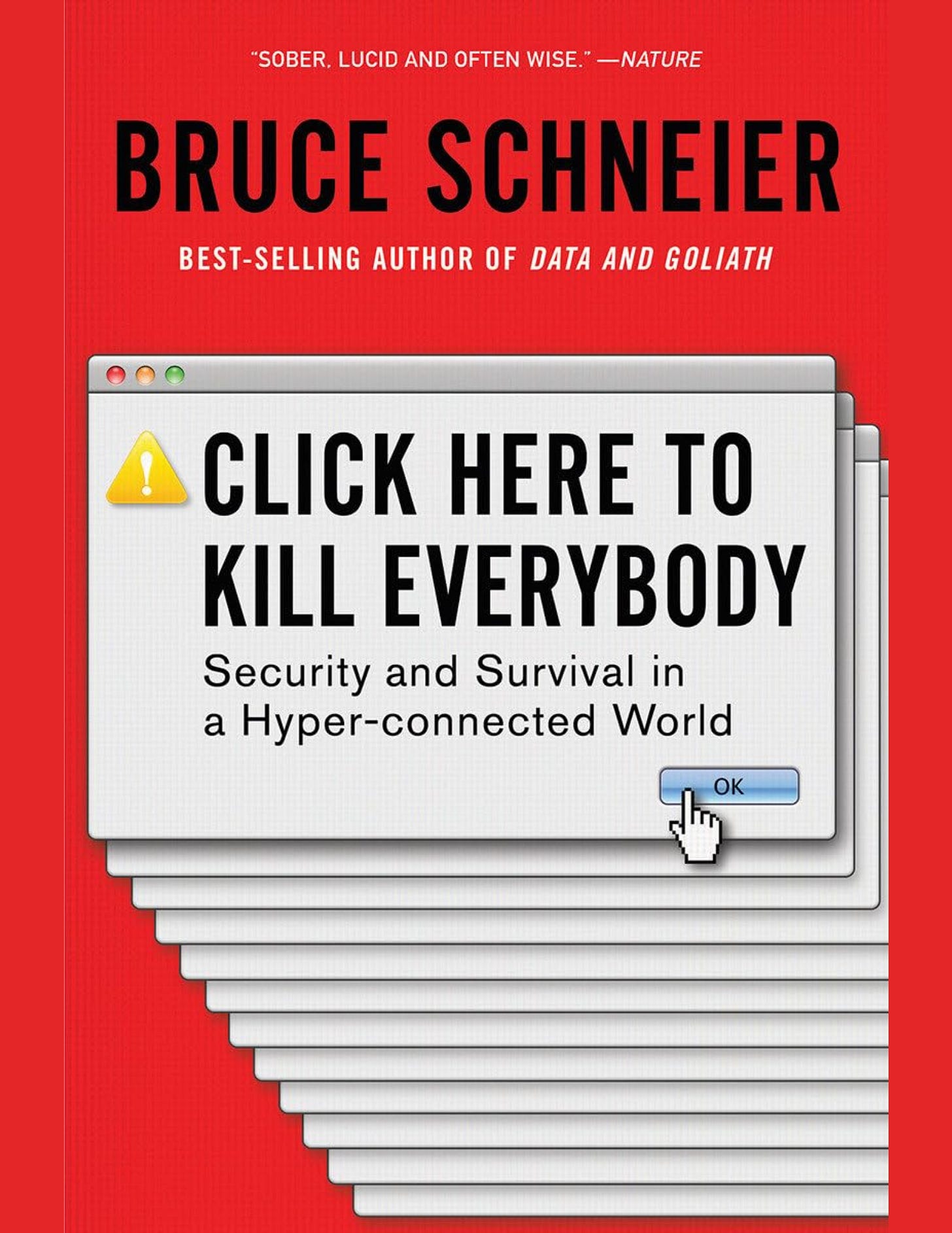Click Here to Kill Everybody: Security and Survival in a Hyper-Connected World
A gripping look at the dangers of our hyper-connected world, Bruce Schneier warns how smart devices can be weaponized and offers practical policies to secure tech before it's too late.
In Click Here to Kill Everybody, cybersecurity expert Bruce Schneier issues a powerful warning: the internet has moved beyond screens and into the physical world. Today’s smart devices, cars, thermostats, medical implants, drones are convenient, but dangerously vulnerable. As connectivity grows, so do the stakes.
First time seeing this?
Schneier pulls no punches. The threat is no longer just about stolen data or privacy breaches. In this hyper-connected era, attackers can now manipulate devices that affect our safety, health, and infrastructure. It’s not just your email at risk, it’s your brakes, your power grid, even your body.
The book explores how the rapid pace of digital innovation has outstripped our ability to secure it. Schneier doesn’t just raise alarms, he offers realistic solutions. He calls for public policy, corporate accountability, and global cooperation to prevent disasters in a world where code can kill.
With his clear prose and urgent message, Schneier challenges readers to rethink how we build, regulate, and live with technology. Click Here to Kill Everybody is both a wake-up call and a guidebook for surviving the future.
What You Will Learn
Why smart devices can be dangerous by design
How insecure systems lead to real-world consequences
The limits of current cybersecurity strategies
Why regulation is crucial in a connected world
Policy frameworks to help secure critical technologies
How governments and industries can work together to prevent catastrophic attacks
Who This Book Is For
Technologists and policymakers shaping the future of IoT
Business leaders, educators, and everyday users of connected devices
Cybersecurity professionals and researchers
Anyone concerned about the growing overlap between digital and physical risk
Table of Contents
Part I: The Trends
Computers Are Still Hard to Secure
Patching Is Failing as a Security Paradigm
Knowing Who’s Who on the Internet Is Getting Harder
Everyone Favors Insecurity
Risks Are Becoming Catastrophic
Part II: The Solutions
What a Secure Internet+ Looks Like
How We Can Secure the Internet+
Government Is Who Enables Security
How Governments Can Prioritize Defense Over Offense
Plan B: What’s Likely to Happen
Where Policy Can Go Wrong
Towards a Trusted, Resilient, and Peaceful Internet+




